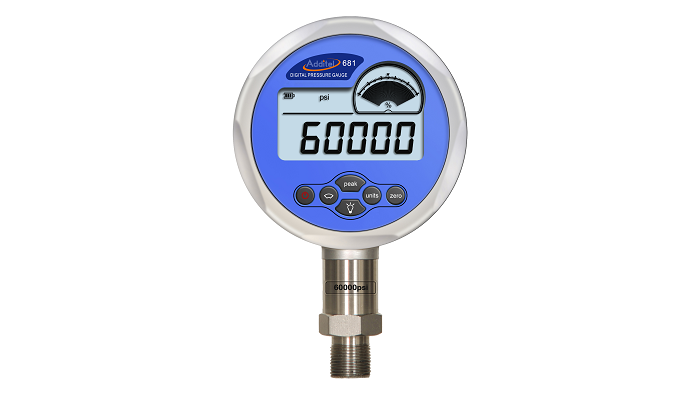Why Is Calibration Key for Digital Pressure Gauge?

Digital Pressure Gauges are essential tools in modern industrial and laboratory applications. They provide precise readings of fluid and gas pressures, helping engineers, technicians, and operators monitor system performance and ensure safety. However, the accuracy of a Digital Pressure Gauge is only as reliable as its calibration. Calibration ensures that measurements remain true to standard references, prevents errors, and extends the life of the instrument. Understanding why calibration is key is essential for anyone relying on digital pressure measurement.
The Importance of Calibration
Ensuring Accurate Readings
A primary function of a Digital Pressure Gauge is to provide accurate readings. Over time, sensors may drift due to temperature changes, mechanical stress, or electrical wear. Calibration adjusts the gauge to match standard references, correcting these deviations. Without regular calibration, readings may become inaccurate, leading to process errors, equipment damage, or safety risks.
Accurate measurement is particularly critical in high-pressure systems or environments where small variations can have significant consequences. Calibrated gauges ensure that operators can make informed decisions based on reliable data.
Maintaining Consistency in Measurements
Calibration ensures that a Digital Pressure Gauge provides consistent readings across different operating conditions. In industrial environments, temperature, vibration, and humidity can affect sensor performance. Calibration accounts for these variables, maintaining reliable output regardless of external factors.
Consistency is especially important when multiple gauges are used in a system. Calibrated instruments reduce measurement discrepancies, allowing engineers to compare readings and monitor trends accurately.
How Calibration Works
Standard Reference Comparison
The calibration process begins by comparing the gauge reading to a known standard. This standard could be a deadweight tester, a reference digital gauge, or a precision manometer. The Digital Pressure Gauge is exposed to several pressures across its range, and the readings are recorded and analyzed.
Any deviations between the gauge and the reference are noted. Adjustments are then made either electronically or through the instrument’s software to bring readings in line with the standard. This process ensures the gauge accurately reflects actual pressure conditions.
Adjustment and Verification
After initial comparison, the gauge is adjusted to correct errors. Modern digital gauges often allow calibration through software interfaces, making the process more precise. Following adjustment, verification tests confirm that the instrument now measures accurately at various pressure points. This step is critical to ensure long-term reliability.
Reasons Calibration Is Critical
Safety Assurance
Pressure measurement errors can lead to dangerous situations in industrial settings. Overpressure or underpressure conditions may result in equipment failure, leaks, or explosions. Calibrating a Digital Pressure Gauge ensures that operators can detect unsafe conditions promptly.
Regular calibration reduces the risk of accidents by providing reliable warnings when pressure exceeds safe limits. In industries like chemical processing, oil and gas, or pharmaceuticals, this reliability is essential for worker safety and regulatory compliance.
Process Efficiency
Accurate pressure measurements directly impact process efficiency. Systems operate optimally when pressures are controlled within precise ranges. Calibrated digital gauges allow operators to maintain these parameters, reducing energy consumption, minimizing waste, and improving product quality.
Calibration also supports predictive maintenance. Accurate readings help identify trends, detect anomalies early, and prevent costly downtime caused by equipment malfunction.
Regulatory Compliance
Many industries are governed by strict regulations that require calibrated measurement devices. A Digital Pressure Gauge must often meet standards set by ISO, ASTM, or other regulatory bodies. Regular calibration ensures compliance, avoiding penalties and maintaining certification.
Documentation of calibration results is also critical. It serves as proof that equipment is maintained according to industry standards, supporting audits and inspections.
Factors Affecting Digital Pressure Gauge Accuracy
Environmental Conditions
Temperature fluctuations, humidity, and vibration can impact the performance of a Digital Pressure Gauge. Sensors may expand or contract, affecting readings. Calibration takes these environmental factors into account, ensuring accurate output under actual operating conditions.
Sensor Drift and Aging
Digital sensors degrade over time due to mechanical stress, electrical wear, or exposure to corrosive substances. Sensor drift can cause gradual inaccuracies. Calibration identifies and corrects these errors, maintaining instrument reliability.
Handling and Usage
Frequent use, mishandling, or exposure to pressure spikes can affect gauge performance. Calibration detects any changes caused by such factors, allowing corrective adjustments before they lead to operational issues.
Best Practices for Calibration
Schedule Regular Calibration
The frequency of calibration depends on the application, pressure range, and environmental conditions. Critical systems may require calibration monthly or quarterly, while less sensitive applications may allow longer intervals. Maintaining a consistent schedule ensures ongoing accuracy.
Use Certified Standards
Calibration should always be performed using certified reference instruments. These standards ensure that adjustments are based on accurate and traceable measurements. Using unverified equipment can introduce errors and reduce the reliability of the Digital Pressure Gauge.
Document and Track Results
Maintaining a calibration log is essential. Each calibration should be recorded, including date, reference used, adjustments made, and verification results. This documentation supports quality control, compliance, and long-term maintenance planning.
Conclusion
Calibration is vital for the accuracy, consistency, and reliability of a Digital Pressure Gauge. It ensures that measurements reflect true pressure conditions, enhances safety, supports process efficiency, and maintains regulatory compliance. Without regular calibration, digital gauges may produce erroneous readings, leading to equipment damage, process inefficiencies, and potential hazards.
By understanding the importance of calibration, operators and engineers can maintain trust in their measurement tools. Using certified standards, scheduling routine checks, and documenting results all contribute to long-lasting gauge performance. Ultimately, calibration transforms a Digital Pressure Gauge from a simple measuring device into a reliable partner in industrial and laboratory operations, ensuring precision, safety, and efficiency.
- Art
- Causes
- Crafts
- Dance
- Drinks
- Film
- Fitness
- Food
- Spiele
- Gardening
- Health
- Startseite
- Literature
- Music
- Networking
- Andere
- Party
- Religion
- Shopping
- Sports
- Theater
- Wellness



